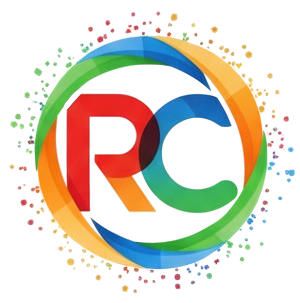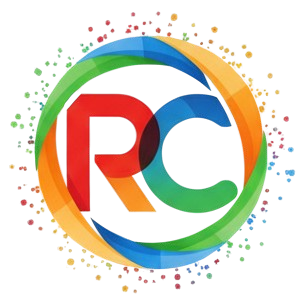Construction Growth and Comfort Trends Boost the East and Africa Polyurethane Foam Market
Introduction
The Middle East and Africa Polyurethane Foam Market has become an important part of the region’s manufacturing and construction ecosystem. Polyurethane foam is a versatile material used in insulation, furniture, bedding, automotive parts, packaging, and several industrial applications. Its ability to offer durability, comfort, and energy efficiency makes it valuable across many sectors.
In recent years, the market has shown steady growth due to rising construction activities, a growing furniture industry, and increasing demand for energy-efficient materials. Rapid urbanization and housing development across countries like the United Arab Emirates, Saudi Arabia, South Africa, and Egypt are fueling the need for better thermal insulation. As a result, polyurethane foam has gained strong traction in both residential and commercial projects.
Moreover, the global movement toward sustainable materials and energy-saving technologies has increased the importance of polyurethane foam. With governments focusing on green buildings and reduced energy consumption, demand is likely to continue rising across multiple industries. These trends show that the market plays a significant role in the overall regional economy.
Stay ahead with crucial trends and expert analysis in the latest Middle East and Africa Polyurethane Foam Market report. Download now: https://www.databridgemarketresearch.com/reports/middle-east-africa-polyurethane-foam-market
Market Overview
The Middle East and Africa Polyurethane Foam Market has expanded consistently over the last decade. The growth is driven by construction investments, industrial development, and technological advancements in foam production. The region’s focus on diversifying economic activities beyond oil has increased demand for high-performance materials, especially in sectors like automotive, electronics, and packaging.
Historically, the market grew at a moderate pace due to limited production capabilities. However, in the last few years, new manufacturing facilities and improved distribution networks have helped boost regional supply. As consumer awareness increases and industries look for lightweight and energy-efficient materials, polyurethane foam continues to gain adoption.
Looking ahead, the market is expected to show strong potential. Rising demand for insulation in buildings, along with expansion in the furniture and bedding industry, will support growth. Additionally, countries in the Gulf Cooperation Council are focusing on infrastructure development, which will further boost polyurethane foam consumption.
Key regions driving demand include the United Arab Emirates, Saudi Arabia, South Africa, Nigeria, Egypt, and Kenya. Each country contributes to different application segments, making the market highly diverse.
Key Market Drivers
1. Rapid Construction and Urban Development
Construction remains the biggest driver of polyurethane foam usage. The Middle East, especially the Gulf region, continues to invest heavily in real estate, commercial towers, airports, hotels, and housing projects. Polyurethane foam is important in insulation systems because it reduces heat transfer and lowers energy usage. As temperatures remain high throughout the year, energy-efficient materials are essential.
2. Growth in the Furniture and Bedding Industry
Furniture manufacturers rely on polyurethane foam for comfort products, mattresses, seats, and cushions. Increasing population, rising disposable incomes, and growth in home décor trends have encouraged the expansion of furniture production. Many local manufacturers are now using advanced foam technologies to meet global standards, which supports market growth.
3. Expansion of the Automotive Industry
Automotive companies use polyurethane foam to produce seats, panels, headrests, and other interior components. It helps reduce vehicle weight, improves comfort, and enhances fuel efficiency. Several African countries are increasing automobile assembly operations, boosting foam consumption. The Middle East also imports a high number of automobiles, which increases demand for aftermarket parts containing polyurethane foam.
4. Rising Demand for Lightweight and Sustainable Materials
Industries are shifting toward lighter materials that improve efficiency and reduce costs. Polyurethane foam meets these needs because it offers high strength with low weight. Additionally, manufacturers are introducing eco-friendly foams that support sustainability goals.
5. Government Focus on Energy Efficiency
Many governments in the Middle East and Africa are adopting building codes that require better insulation. Polyurethane foam plays an important role in meeting these standards. With more green building certifications and energy audits, demand is expected to grow steadily.
Market Segmentation
By Type
-
Flexible Foam: Commonly used in furniture, bedding, automotive seating, and comfort products. It has the highest market share due to wide usage.
-
Rigid Foam: Used mainly for insulation in construction, refrigeration, and industrial sectors. It is gaining traction due to rising interest in energy-saving buildings.
-
Spray Foam: Preferred for wall insulation, roofing, and sealing gaps. It is popular in the Middle East due to its thermal properties.
By Application
-
Construction: The largest segment, driven by insulation requirements and building development.
-
Furniture and Bedding: A fast-growing segment backed by lifestyle changes and increasing residential demand.
-
Automotive: Growing due to increasing vehicle production and demand for comfortable seating.
-
Packaging: Expanding due to the need for protective materials for fragile products.
-
Electronics and Appliances: Used in insulation for refrigerators, freezers, and other home appliances.
By Country
-
United Arab Emirates and Saudi Arabia: Strong demand from construction and industrial sectors.
-
South Africa and Egypt: High consumption in furniture, bedding, and packaging industries.
-
Nigeria and Kenya: Growing demand fueled by urbanization and domestic manufacturing.
Competitive Landscape
The Middle East and Africa Polyurethane Foam Market is competitive, with several global and regional players. Leading companies focus on capacity expansion, product innovation, and partnerships to strengthen their presence.
Many companies are investing in new foam technologies that improve durability, reduce environmental impact, and enhance performance. Common strategies include:
-
Product Launches: New foam types with improved thermal properties or eco-friendly materials.
-
Partnerships and Collaborations: Agreements with construction firms, furniture manufacturers, and automotive companies.
-
Acquisitions: International firms acquiring local players to increase market penetration.
-
Technological Advancements: Automation, improved production lines, and formulations that meet environmental regulations.
The competitive environment encourages innovation and ensures continuous improvements in quality and performance.
Challenges and Restraints
1. Fluctuating Raw Material Prices
Polyurethane foam production depends on petrochemical-based materials. Price fluctuations create uncertainties for manufacturers and affect profitability.
2. Environmental and Regulatory Issues
Due to increased focus on sustainability, manufacturers must follow strict regulations regarding emissions and material safety. Meeting these standards may increase production costs.
3. Supply Chain Limitations
Some regions face delays in raw material imports, production bottlenecks, and limited local manufacturing capacity. These issues can slow down market growth.
4. Limited Awareness in Emerging Markets
In some African countries, industries still rely on traditional materials due to lack of awareness about advanced polyurethane foam benefits.
Future Outlook
The Middle East and Africa Polyurethane Foam Market is expected to grow at a strong pace in the coming years. Demand will remain high across construction, furniture, automotive, and packaging sectors. As governments continue promoting energy-efficient materials and green buildings, the use of polyurethane foam will increase further.
New technologies, such as bio-based foams and improved insulation systems, will create fresh opportunities for manufacturers. In addition, expanding populations, rising incomes, and growth of domestic industries will shape market trends.
The market will also benefit from increased investments in local production units, as companies aim to reduce dependency on imports. With supportive policies and technological improvements, the future looks promising for polyurethane foam manufacturers and suppliers.
Conclusion
The Middle East and Africa Polyurethane Foam Market is growing steadily due to strong construction activity, rising demand for comfort products, and increased awareness of energy efficiency. Its role in insulation, furniture, automotive, and industrial applications makes it a key material for regional development.
Despite challenges such as regulatory pressure and raw material price fluctuations, the market continues to evolve through innovation and strategic investments. As industries adopt sustainable solutions and governments push for greener buildings, the market’s potential will expand even more.
Overall, the industry offers strong opportunities for manufacturers, distributors, and investors looking to participate in a dynamic and fast-developing market.
Frequently Asked Questions (FAQs)
1. What is the growth rate of the Middle East and Africa Polyurethane Foam Market?
The market is expected to grow steadily due to rising demand in construction, furniture, automotive, and insulation applications.
2. Which region is expected to dominate the market in the future?
Gulf countries like the United Arab Emirates and Saudi Arabia will continue to lead due to large construction and industrial projects.
3. Who are the leading players in the Middle East and Africa Polyurethane Foam Market?
Several global and regional players operate in the market, focusing on innovation, new product launches, and local expansion.
4. What are the major challenges faced by the market?
Key challenges include volatile raw material prices, environmental regulations, supply chain issues, and limited awareness in emerging regions.
5. What are the future opportunities in the market?
Opportunities include sustainable foam solutions, energy-efficient insulation, growth in domestic manufacturing, and technological advancements.
Browse More Reports:
Global Partial Androgen Insensitivity Syndrome Market
Global Passion Flower Extracts Market
Global Photodiodes Market
Global Phytonutrient Ingredients in Food Market
Global Polyolefin Catalyst Market
Global Portable Fabric Canopies Market
Global Refrigerated Vending Machine Market
Global Renal Artery Stenosis Treatment Market
Global Resorcinol Market
Global Rubber Repair Adhesives Market
Global Scalpels Market
Global Security Monitoring Proactive Market
Global Self-Monitoring of Blood Glucose (SMBG) Market
Global Semi Anechoic Chamber Market
Global Silicon Based Paper Market
Global Skin and Skin Structure Infections (SSSI) (Infectious Disease) Treatment Market
Global Skin Lightening Products Market
Global Smart Street Lighting Wi-Sun Technology Market
Global Spnodylocostal Dysostosis Market
Global Spring Water Market
About Data Bridge Market Research:
An absolute way to forecast what the future holds is to comprehend the trend today!
Data Bridge Market Research set forth itself as an unconventional and neoteric market research and consulting firm with an unparalleled level of resilience and integrated approaches. We are determined to unearth the best market opportunities and foster efficient information for your business to thrive in the market. Data Bridge endeavors to provide appropriate solutions to the complex business challenges and initiates an effortless decision-making process. Data Bridge is an aftermath of sheer wisdom and experience which was formulated and framed in the year 2015 in Pune.
Contact Us:
Data Bridge Market Research
US: +1 614 591 3140
UK: +44 845 154 9652
APAC : +653 1251 975
Email:- corporatesales@databridgemarketresearch.com





